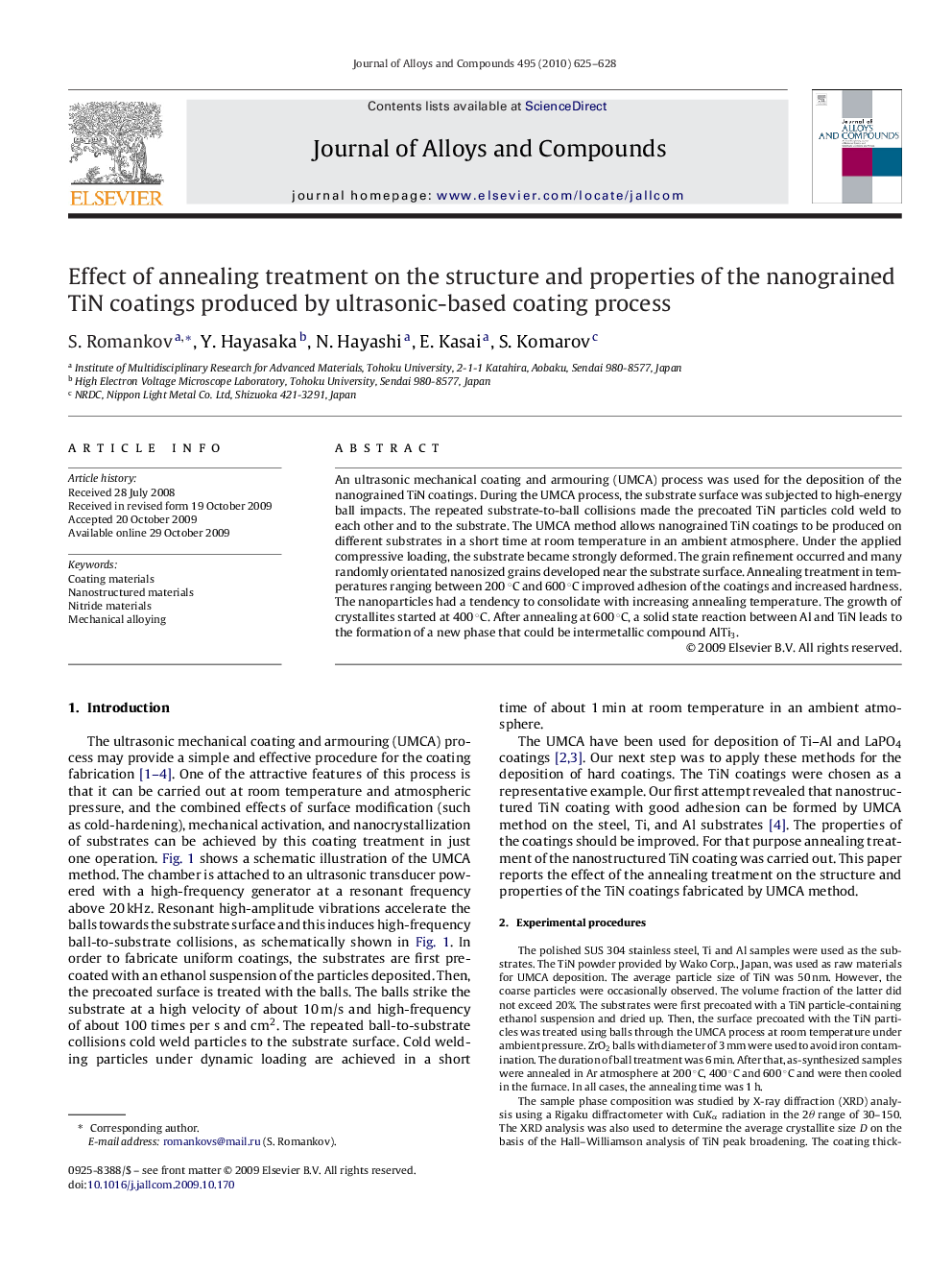| Article ID | Journal | Published Year | Pages | File Type |
|---|---|---|---|---|
| 1621690 | Journal of Alloys and Compounds | 2010 | 4 Pages |
An ultrasonic mechanical coating and armouring (UMCA) process was used for the deposition of the nanograined TiN coatings. During the UMCA process, the substrate surface was subjected to high-energy ball impacts. The repeated substrate-to-ball collisions made the precoated TiN particles cold weld to each other and to the substrate. The UMCA method allows nanograined TiN coatings to be produced on different substrates in a short time at room temperature in an ambient atmosphere. Under the applied compressive loading, the substrate became strongly deformed. The grain refinement occurred and many randomly orientated nanosized grains developed near the substrate surface. Annealing treatment in temperatures ranging between 200 °C and 600 °C improved adhesion of the coatings and increased hardness. The nanoparticles had a tendency to consolidate with increasing annealing temperature. The growth of crystallites started at 400 °C. After annealing at 600 °C, a solid state reaction between Al and TiN leads to the formation of a new phase that could be intermetallic compound AlTi3.
